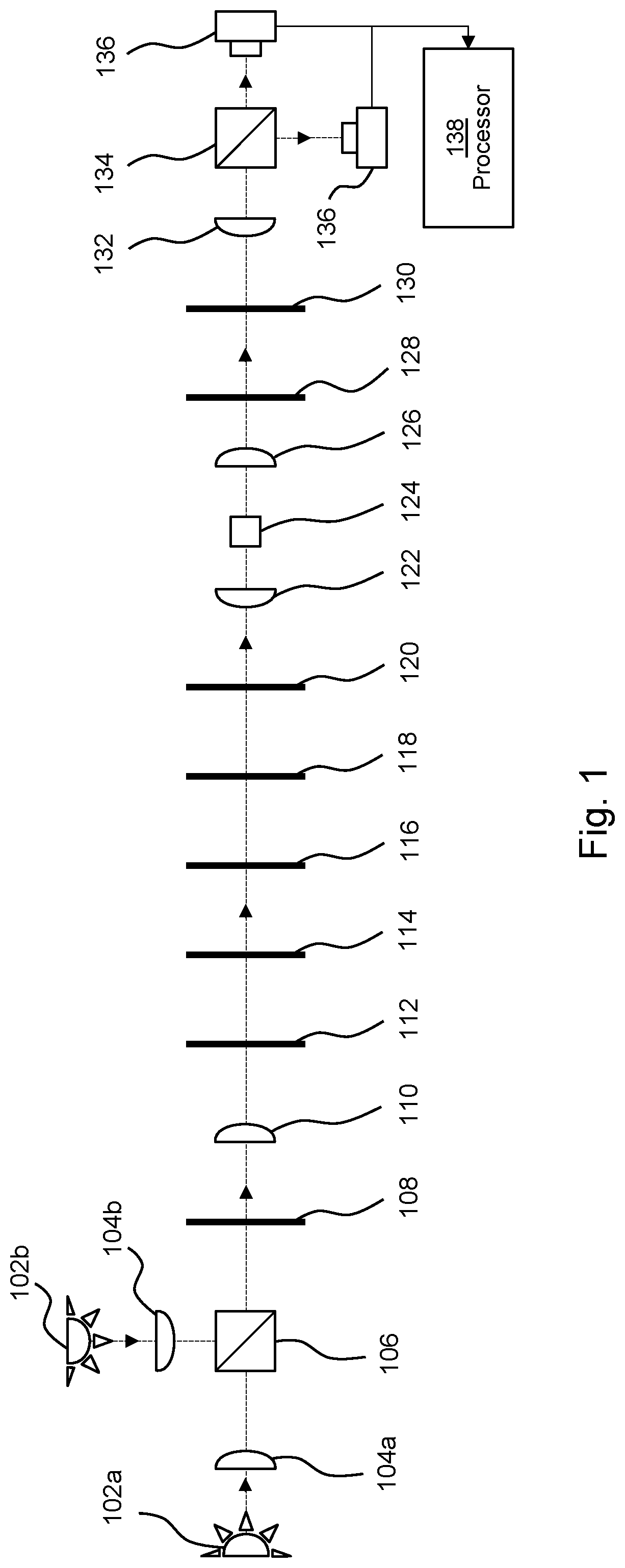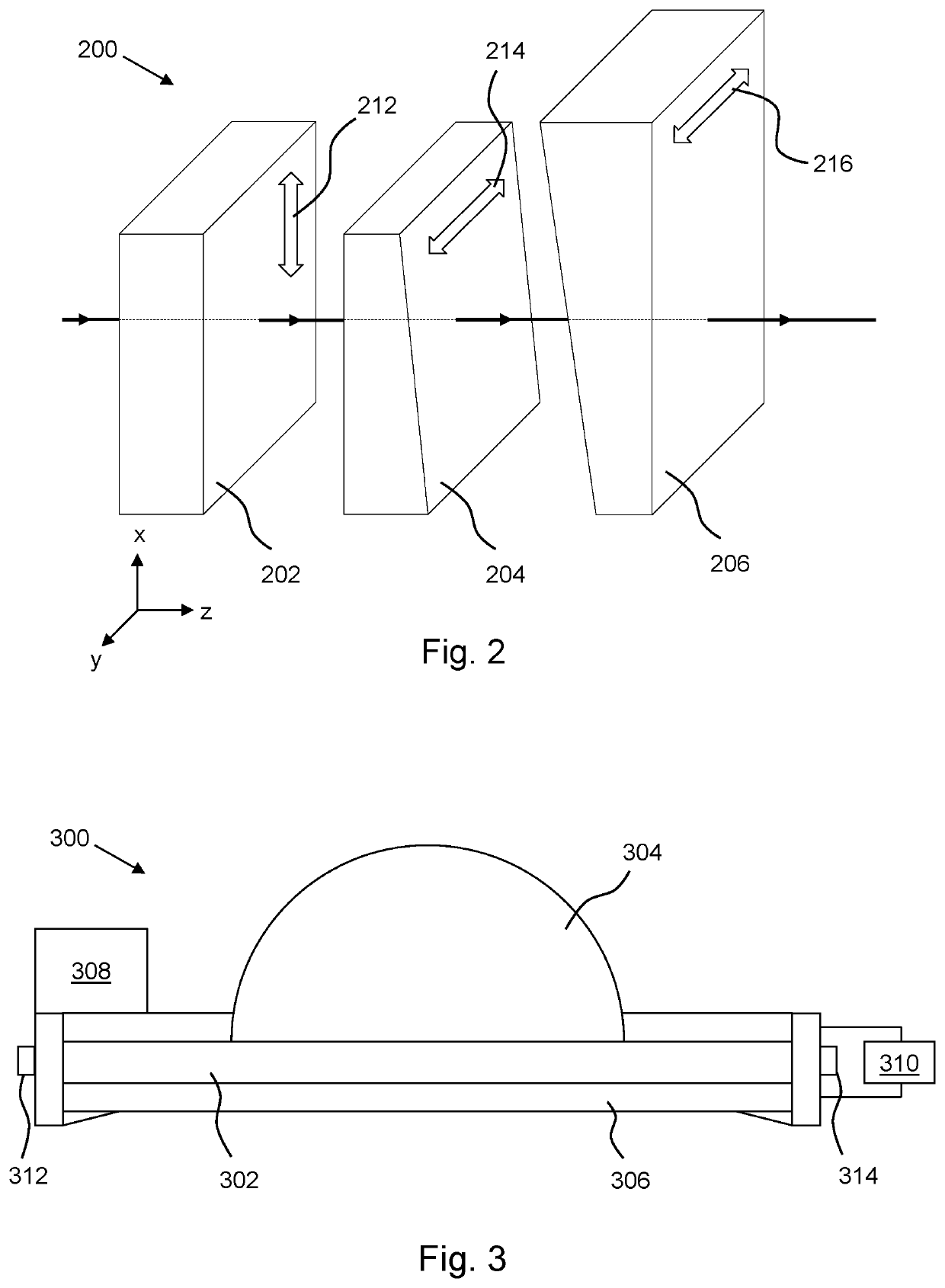Analysing nano-objects
a nano-object and nano-structure technology, applied in the field of nano-object analysis, can solve the problems of difficult experimental quantification of cross-section values, low contrast of current particle characterisation techniques, time-consuming and/or-high-cost, etc., and achieves high throughput particle analysis and ease of instrument operation. , the effect of convenient for a user
- Summary
- Abstract
- Description
- Claims
- Application Information
AI Technical Summary
Benefits of technology
Problems solved by technology
Method used
Image
Examples
Embodiment Construction
7]FIG. 1 is an example of a system which may be utilised in one embodiment of the present invention.
[0098]In this example, an illumination apparatus comprises a first and second light source 102a, 102b, which may for example comprise LEDs. The light sources 102 provide light via respective collector lenses 104a, 104b to a beam combiner 106, which in this example comprises a dichroic beam combiner. Light is projected via a diaphragm 108 which controls the illumination area onto the sample, a lens 110 and a first polariser 112 before being passed to a continuously variable spectral filter 114.
[0099]The light sources 102 may cover the full range allowed by the optics, for example they may provide wavelengths from 300 nm to 1500 nm. In some examples the light sources may be LEDs which may have a bandwidth from 30 nm to 300 nm.
[0100]FIG. 2 is an example of a continuously spectral filter 200 which may be utilised as the continuously spectral filter 114 in one embodiment of the present inv...
PUM
| Property | Measurement | Unit |
|---|---|---|
| area | aaaaa | aaaaa |
| diameter | aaaaa | aaaaa |
| diameter | aaaaa | aaaaa |
Abstract
Description
Claims
Application Information
 Login to View More
Login to View More - R&D
- Intellectual Property
- Life Sciences
- Materials
- Tech Scout
- Unparalleled Data Quality
- Higher Quality Content
- 60% Fewer Hallucinations
Browse by: Latest US Patents, China's latest patents, Technical Efficacy Thesaurus, Application Domain, Technology Topic, Popular Technical Reports.
© 2025 PatSnap. All rights reserved.Legal|Privacy policy|Modern Slavery Act Transparency Statement|Sitemap|About US| Contact US: help@patsnap.com



